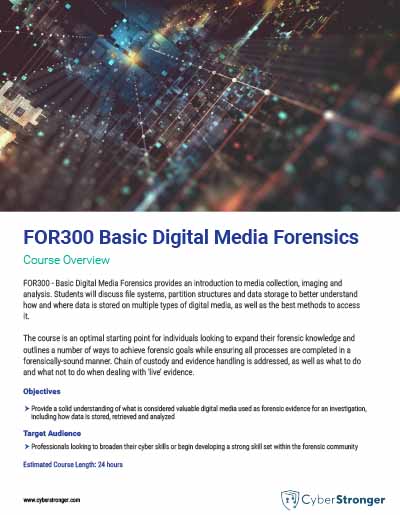Overview
FOR300 – Basic Digital Media Forensics provides an introduction to media collection, imaging and analysis. Students will discuss file systems, partition structures and data storage to better understand how and where data is stored on multiple types of digital media, as well as the best methods to access it.
The course is an optimal starting point for individuals looking to expand their forensic knowledge and outlines a number of ways to achieve forensic goals while ensuring all processes are completed in a forensically-sound manner. Chain of custody and evidence handling is addressed, as well as what to do and what not to do when dealing with ‘live’ evidence.
Target Audience
Professionals looking to broaden their cyber skills or begin developing a strong skill set within the forensic community.
Objective
Provide a solid understanding of what is considered valuable digital media used as forensic evidence for an investigation, including how data is stored, retrieved and analyzed.
Topics
During the first lesson, students will learn about setting up a Forensic workspace. In addition, students will learn about preparing target media to ensure a forensically sound process prior to imaging.
A lesson consisting of Incident response and acquisition. Students will also learn about forensic tools, windows file systems, and partition structures.
Students will become more familiar with Forensics for Windows, and learn the value of metadata, and exifdata in forensic analysis.
Students will learn the proper techniques for Forensic reporting and documentation.
Review all submitted forensic reports at the end of Day 4 and discuss items of concern within both the processes and the reporting.
